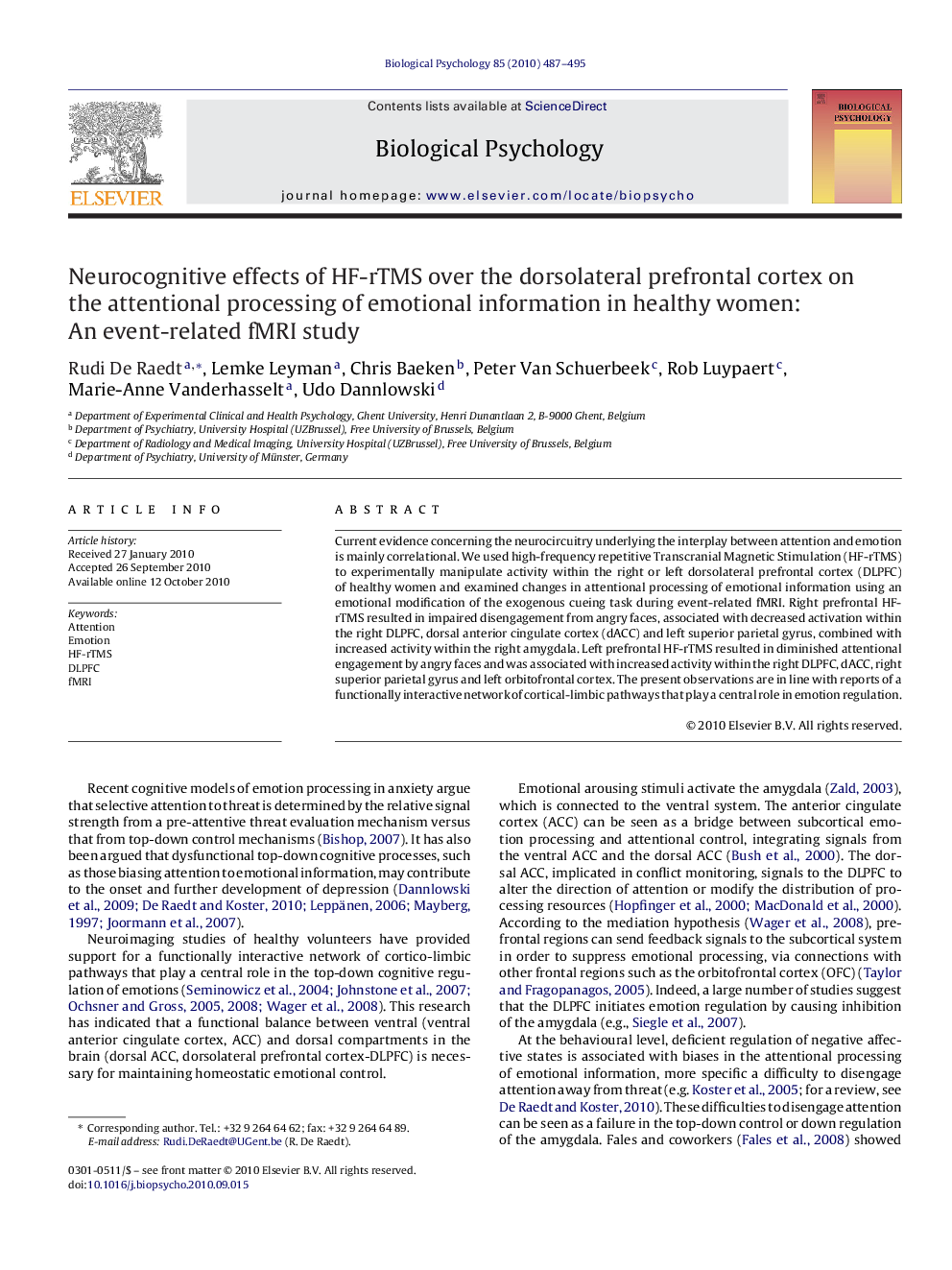| Article ID | Journal | Published Year | Pages | File Type |
|---|---|---|---|---|
| 921343 | Biological Psychology | 2010 | 9 Pages |
Current evidence concerning the neurocircuitry underlying the interplay between attention and emotion is mainly correlational. We used high-frequency repetitive Transcranial Magnetic Stimulation (HF-rTMS) to experimentally manipulate activity within the right or left dorsolateral prefrontal cortex (DLPFC) of healthy women and examined changes in attentional processing of emotional information using an emotional modification of the exogenous cueing task during event-related fMRI. Right prefrontal HF-rTMS resulted in impaired disengagement from angry faces, associated with decreased activation within the right DLPFC, dorsal anterior cingulate cortex (dACC) and left superior parietal gyrus, combined with increased activity within the right amygdala. Left prefrontal HF-rTMS resulted in diminished attentional engagement by angry faces and was associated with increased activity within the right DLPFC, dACC, right superior parietal gyrus and left orbitofrontal cortex. The present observations are in line with reports of a functionally interactive network of cortical-limbic pathways that play a central role in emotion regulation.
Research highlights▶ Right prefrontal HF-rTMS results in impaired disengagement from angry faces. ▶ This is associated with decreased activation in the right DLPFC, left superior parietal gyrus and dACC. ▶ Left prefrontal HF-rTMS results in diminished attentional engagement by angry faces. ▶ This is associated with increased activity in the right DLPFC, dACC, right superior parietal gyrus and left OFC.
